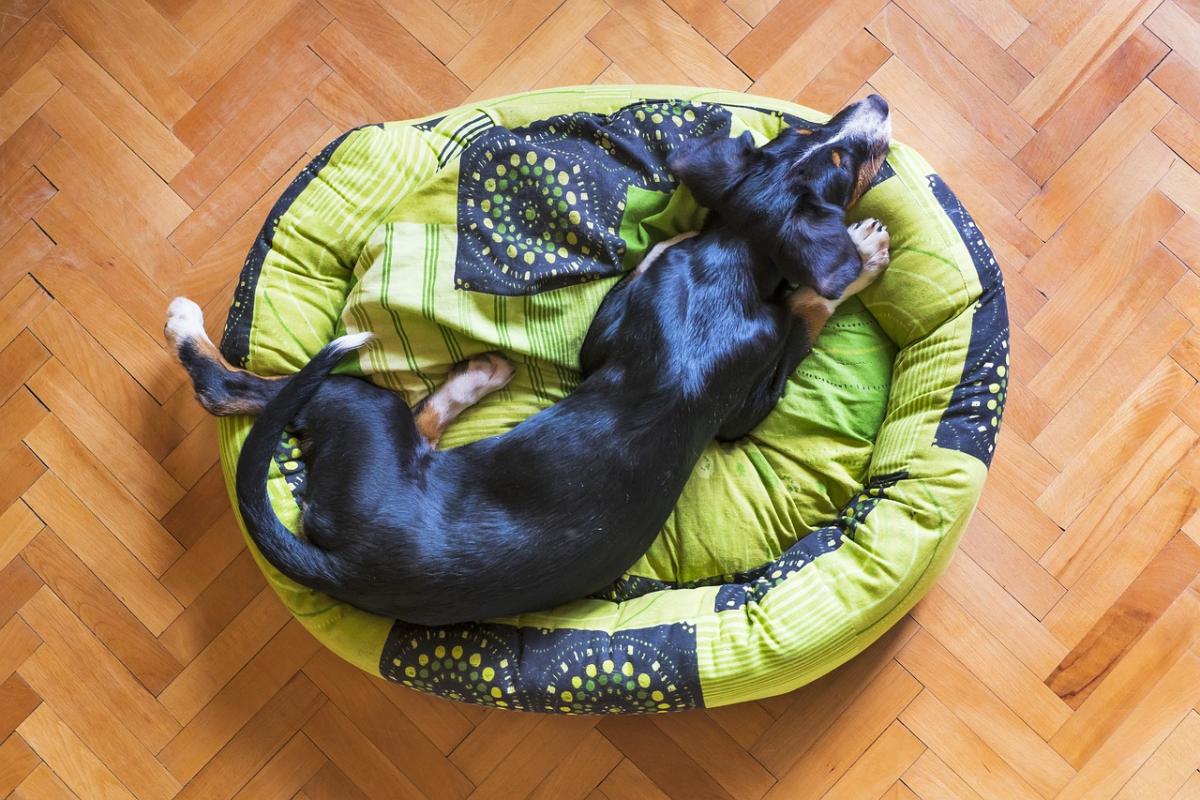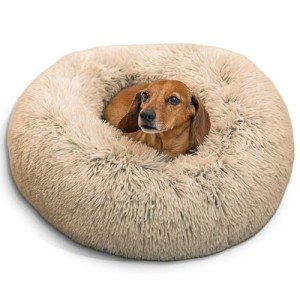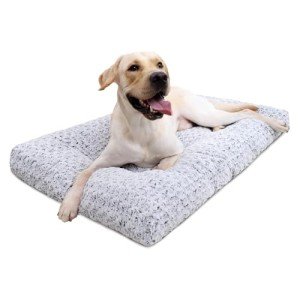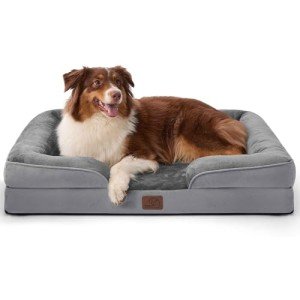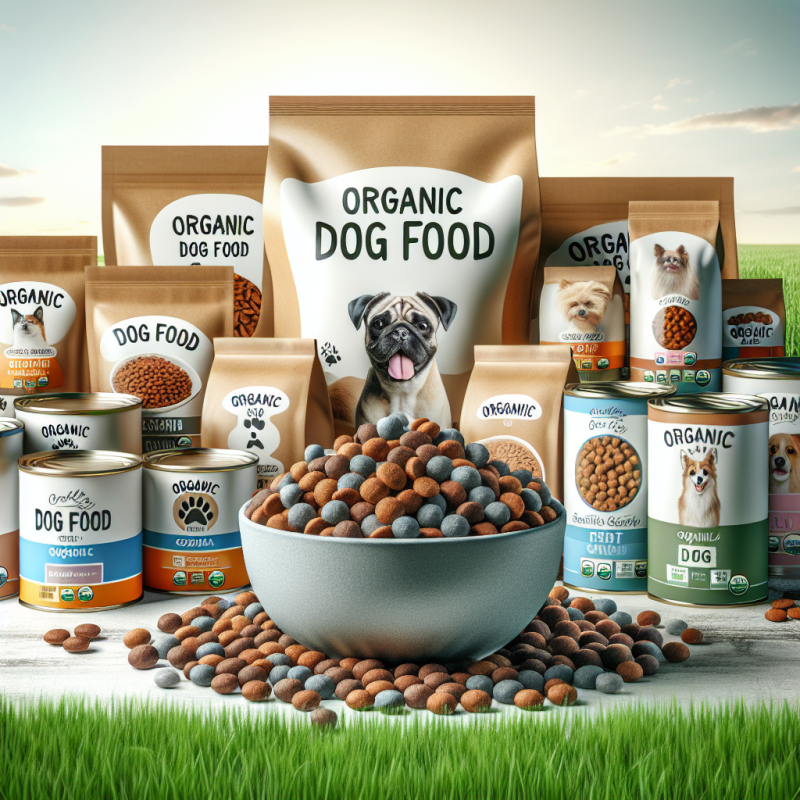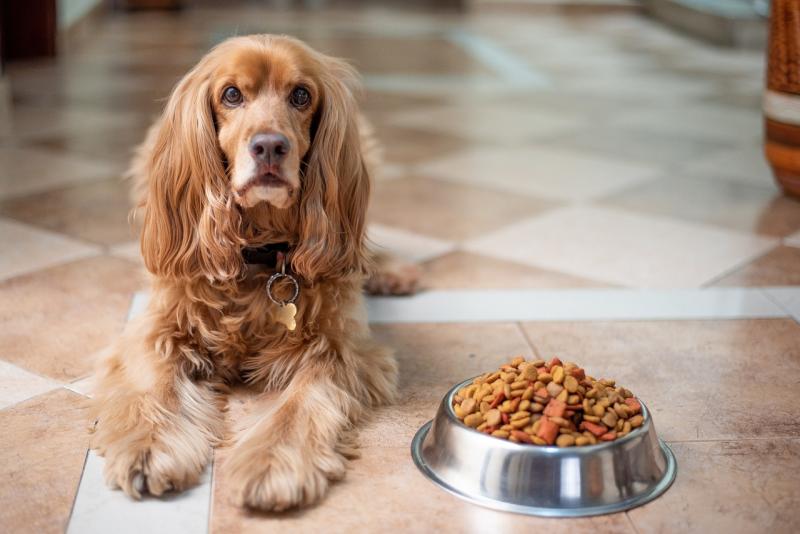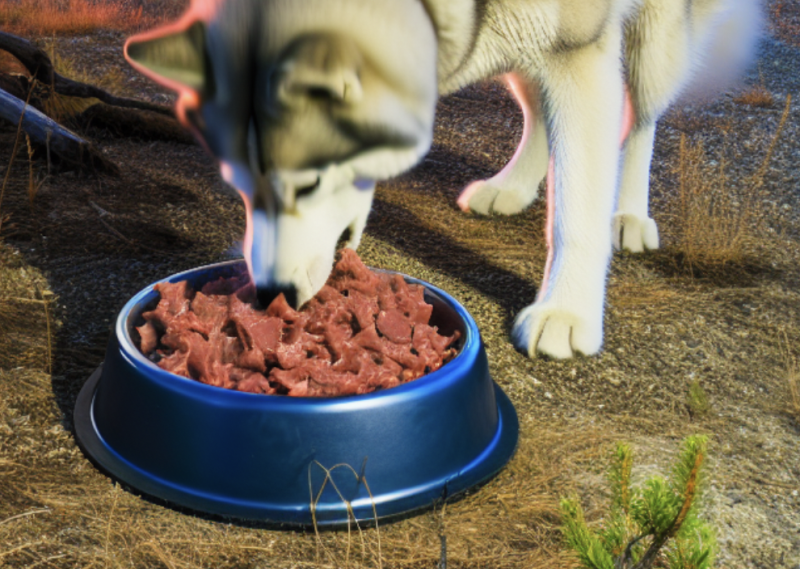Find the Perfect Dog Bed: Your Ultimate Guide to Choosing Comfort, Support, and Style for Your Dog-child
Every dedicated dog owner shares a common desire: you want to give your dog the utmost comfort and care. Beyond tasty treats and regular walks, a high-quality dog bed is a cornerstone of their well-being. It's more than just a soft spot to land; it's a sanctuary for restorative sleep, needed joint support, and a vital sense of security.
The Problem: The vast world of dog beds can feel overwhelming, with an endless array of options ranging from plush donut beds to specialized orthopedic dog beds and luxurious memory foam dog beds.
This comprehensive dog bed guide has been crafted to help you navigate the complicated landscape of choices. I've lost myself in the Amazon maze of possible dog beds, meandering through thousands of beds. Here, we’ll delve deep into the nuances of choosing the perfect lounging spot for your beloved pup, ensuring it's tailored not just to their size but also to their unique personality, health needs, and even your home decor (that last one is optional!).
By the end of this guide, you’ll have all the knowledge needed to make an informed decision. Your dog will thank you with contented snores, snuggles, stretches or sploots... read on to find that perfect bed!
Before You Shop: Watch Your Dog Carefully
Before you even begin to browse the dazzling array of dog beds on the market, pause and become an astute observer of your canine companion. What you perceive as the "perfect" bed might not align with their intrinsic preferences. By closely watching your dog's natural resting habits, you'll gain valuable insights that will guide your selection process and ultimately save you the time, money, and aggravation of possible dog bed rejection (been there, done that... you can't make a dog like a bed they don't like!).
The Different Types of Dog Postures for Relaxation:
- The "Curl Up and Tuck" Pup: Does your dog gravitate towards curling into a tight, secure ball, often with their nose tucked into their tail? This classic position suggests they crave a feeling of security and enclosure. These pups often thrive in bolster dog beds or donut-shaped beds that mimic a den or the feeling of being snuggled in a pack.
- The "Splay Out and Stretch" Doggo: On the other end of the spectrum, some dogs are natural sprawlers, extending their limbs in all directions, sometimes even flipping onto their back with paws in the air. These relaxed sleepers need ample, unobstructed surface area. Flat, mattress-style beds are usually the best dog bed option for these pups, allowing them to stretch out fully without hanging off the edges.
- The "Under the Covers" Burrower: Is your dog constantly trying to burrow under blankets, pillows, or even your clothes? This behavior indicates a strong desire for warmth, darkness, and a feeling of being completely enclosed. While a "cave" or "hooded" bed might be ideal, even a flat bed combined with a soft, inviting blanket they can burrow into can satisfy this need.
- The "Head Rest" Enthusiast: Does your dog always seek out a pillow, a raised edge, or even your foot to rest their head on? This signals a preference for a bed with bolsters or raised edges, providing comfortable support for the neck and head, similar to a pillow.
- The "Cool Surface" Seeker: In warmer climates or for dogs with thick coats, you might notice them opting for cool, hard surfaces like tile or hardwood floors. This is a clear indication that they need a bed with good airflow or even a cooling dog bed, made of special materials that prevent overheating.
- The "Digger/Nester": Some dogs have an instinct to "dig" or "nest" before settling down, pushing and pawing at their bedding. Durable beds with materials that can withstand this behavior are best, and sometimes a softer, more pliable filling that they can shape is preferred. The good news if this is your doggo, is that this type of filling is often less expensive than the dense foam types.
As someone who has shared life with many different canine personalities, I've learned that there's no single "best" dog bed universally. Instead, the focus shifts to finding the bed that will best fit your dog's wants and needs, reflecting their unique instincts and comfort zones. Sometimes, their preferences are surprisingly simple, like choosing a not-so-cushiony but incredibly soft fleece blanket over a much more expensive denim bed. The "why" isn't always clear, but the "what" they prefer definitely is! And our joy as dog owners often comes from being able to spoil them by giving them precisely what they want.
Understanding Dog Bed Materials: Beyond Just Cushioning
The material that makes up your dog's bed, both inside and out, significantly impacts its comfort, support, durability, and even temperature regulation. It's not just about how soft it feels; it's about how it performs under pressure, how it lasts, and how easily it can be cleaned.
Inner Fillings: The Core of Comfort and Support
The type of filling within a dog bed is critical, especially when considering a comfortable dog bed for long-term health.
-
Memory Foam Dog Bed (The Gold Standard for Support):
- Pros: This is arguably the best choice for providing contouring support that molds to your dog's body, evenly distributing weight and significantly alleviating pressure points on joints and muscles. This makes a memory foam dog bed an excellent choice for dogs of all ages, from growing puppies who need proper skeletal development to active adults recovering from playtime, and especially for senior dogs or those with joint issues. High-density memory foam retains its shape much longer than standard foam, offering consistent support for years. Many also offer temperature regulation properties.
- Cons: Can be more expensive upfront. Some lower-quality memory foams might retain too much heat.
- What to Look For: Aim for solid slabs of memory foam rather than shredded pieces, which can clump. Check for certifications like CertiPUR-US, which ensures the foam is made without harmful chemicals. A density rating of at least 3.5 lbs per cubic foot indicates good quality.
-
Orthopedic Dog Bed (Targeted Relief for Aches and Pains):
- Pros: While often incorporating memory foam, an orthopedic dog bed is specifically engineered for therapeutic benefits. It typically features denser, multi-layered foam constructions (often a combination of memory foam and supportive base foam) to provide superior support and cushioning. This design actively helps alleviate discomfort for dogs suffering from arthritis, hip dysplasia, elbow dysplasia, degenerative myelopathy, or recovering from surgery. It promotes proper spinal alignment and reduces stress on achy joints, making it the best dog bed for senior dogs and those with mobility challenges.
- Cons: Generally, the most expensive category. Orthopedic dog beds can be heavier and less portable.
- What to Look For: Confirm the type and density of the foam layers. Look for descriptions that specifically mention joint support and pressure relief. It should be firm enough to ensure their joints do not end up on the hard ground beneath the bed.
-
Standard Foam Mattress (Polyurethane Foam/Egg Crate Foam):
- Pros: A more affordable and lightweight option. "Egg crate" foam, with its unique peaks and valleys, provides some air circulation and light cushioning. It's a decent all-around choice for younger, healthy dogs who don't require specialized joint support and for dogs who enjoy nesting, as it's more pliable than solid memory foam.
- Cons: Offers less robust support than memory foam or orthopedic foam, and tends to flatten out more quickly over time, especially under heavier dogs, losing its cushioning properties. Not ideal for dogs with existing joint issues.
-
Polyester Fiberfill (Soft & Plush):
- Pros: Often found in softer, pillow-style beds, polyester fiberfill is very plush and creates a cozy, "nesting" feel. It's lightweight, hypoallergenic, and generally affordable. Good for puppies or small dogs who like to burrow.
- Cons: Provides minimal support and compresses easily, losing its loft and becoming flat over time. Not suitable for dogs needing joint support. Can clump over time, and after washing. It generally doesn't last as long as the more dense filled dog beds.
Outer Covers: Durability, Feel, and Cleanliness
The fabric covering the bed is what your dog will feel and interact with most. Its properties are crucial for comfort, durability, and most importantly, ease of cleaning. Avoid anything that off-gasses, and this is more likely to happen with the cheapest dog beds.
-
Fleece/Faux Fur:
- Pros: Incredibly soft, warm, and inviting. Ideal for dogs who love to snuggle or feel the cold, and great for creating a cozy nesting spot. Short haired dogs loved these beds for their cozy warm texture.
- Cons: Can attract and hold onto dog hair, dust, and odors. Some dogs have folds in their skin that hold odors (Bassett Hounds, for example), so this surface will be hard to keep smelling fresh. It may not be ideal for hot climates or dogs that overheat easily either, since the soft fleece texture holds heat. It can also be less durable against digging or chewing, especially if you have a dog that likes to swallow non-foods (looking at you, Labradors!). Lastly, it's not a great option for the high drooling breads (Bulldogs, for example), just because the fabric is not easy to keep clean.
-
Canvas/Heavy-Duty Fabric (Nylon, Cordura):
- Pros: Extremely durable and resistant to scratching, digging, and light chewing. Often water-resistant or waterproof, making it excellent for outdoor beds, messy pups, or those prone to accidents. Easy to wipe clean and very robust. This is a great choice for highly active dogs who tend to flop wherever they feel like it, not the picky pups who seek out your flannel throw blanket.
- Cons: Can be less soft or plush than other materials, potentially less inviting for some dogs. May not be as insulating in colder environments (Although you could solve this with a throw blanket when it's cold out.)
-
Suede/Faux Leather:
- Pros: Offers a smooth, relatively soft feel and a more upscale appearance that blends well with home decor. Generally easy to wipe down and resistant to pet hair.
- Cons: Can be less breathable, potentially leading to overheating. Genuine suede is difficult to clean; faux leather is much more practical. It may not be practical for dogs who like to "dig" at their bed. This material is for the daintiest dogs only, that is, if you want it to last a while.
-
Cooling Fabrics (Gel-Infused, Breathable Mesh):
- Pros: Designed to wick away moisture and regulate temperature, keeping dogs cool in warmer climates or those prone to overheating (e.g., brachycephalic breeds like Bulldogs or Pugs, or heavily coated breeds).
- Cons: May not be as plush or cozy for dogs who prefer warmth.
The 6 Critical Factors in Choosing the Best Dog Bed
When you're ready to invest in a comfortable dog bed that truly makes a difference in your dog's life, consider these crucial factors as part of your ultimate dog bed guide.
1. Size Matters: Ensuring Ample Surface Area for Every Pup
The cardinal rule of selecting a comfortable dog bed is ensuring it's the absolutely right size. A bed that's too small will force your dog into awkward positions, leaving them cramped or uncomfortably hanging off the edges, which can lead to joint strain and poor sleep quality. Conversely, a bed that's significantly too large might not provide the cozy, secure feeling some dogs, particularly smaller ones or those who love to nest, prefer.
How to Measure Your Dog for the Perfect Fit:
To find the ideal fit, follow these simple steps:
- Measure Length: Have your dog lie down in their most common sleeping position (stretched out is usually best for this measurement). Measure them from the tip of their nose to the base of their tail.
- Add Wiggle Room: Add at least 6-12 inches (15-30 cm) to this measurement. This crucial extra space ensures they can comfortably stretch out, turn around, and shift positions without feeling confined. If your dog enjoys sprawling, consider adding even more space.
- Consider Height (for bolstered beds): If opting for a bolster bed, ensure the bolster height is appropriate for your dog to rest their head comfortably without straining their neck.
Size-Specific Considerations:
- Dog Bed for Small Dogs: For tiny breeds like Chihuahuas, Pomeranians, Yorkshire Terriers, or Shih Tzus, look for compact, snug beds. These often feature raised sides or bolsters that provide a sense of security and warmth, mimicking a den. Round or oval shapes are popular for these "curlers."
- Dog Bed for Large Dogs: If you share your home with a majestic Great Dane, a sturdy German Shepherd, a friendly Labrador Retriever, or a gentle Golden Retriever, you'll absolutely need a spacious dog bed for large dogs. These beds must be expansive enough to allow them to fully stretch out their limbs, providing ample room for sprawling without any part of their body touching the floor. Extra-large rectangular or square beds are typically ideal here.
- Giant Breeds: For true giants, custom or extra-extra-large beds might be necessary to accommodate their impressive length and weight. Focus on robust construction and supreme support.
Pro Tip: If you're going to err in any direction, always err on the larger side. Think of it this way: virtually every dog loves to stretch out on a big, comfy couch! Give them that same luxurious space in their own bed.
2. Choosing the Right Material: The Foundation of Support, Comfort, and Longevity
The core material of your dog's bed is paramount for both immediate comfort and their long-term health. This is where investing in quality truly pays off.
-
Memory Foam Dog Bed:
- Who it's for: Dogs of all ages, but especially beneficial for growing puppies, active adults, and older dogs.
- Benefits: This remarkable material excels at contouring to your dog's unique body shape, distributing their weight evenly. This not only provides unparalleled comfort but also significantly alleviates pressure points on their joints and muscles. For active dogs, it aids in muscle recovery.
- Why it matters: A high-density memory foam dog bed ensures proper spinal alignment during rest, which is vital for preventing future joint issues and managing existing ones. Unlike cheaper foams, quality memory foam resists flattening over time, maintaining its supportive properties for years. Look for beds labeled with CertiPUR-US certification for peace of mind regarding foam safety and quality.
-
Orthopedic Dog Bed:
- Who it's for: Your absolute best choice for senior dogs, dogs with arthritis, hip or elbow dysplasia, intervertebral disc disease (IVDD), or any other joint-related issues. Also highly recommended for large and giant breeds due to the natural stress on their joints.
- Benefits: While often incorporating memory foam, an orthopedic dog bed is specifically engineered for therapeutic relief. These beds typically feature multi-layered foam constructions (e.g., a top layer of memory foam over a dense, supportive base foam) to provide a firm yet comfortable foundation. This specialized design actively reduces pain and discomfort, improves mobility, and can even slow the progression of some degenerative joint diseases by reducing inflammation and stress during rest.
- Why it matters: An orthopedic dog bed isn't just about softness; it's about providing targeted, robust support that cushions joints and keeps them insulated from cold, hard floors. This can dramatically improve your dog's quality of life, allowing them to get up more easily and move with less pain.
-
Standard Foam (e.g., Egg Crate Foam):
- Who it's for: Younger, healthy dogs who need some cushioning but not specialized joint support. Dogs who enjoy light nesting.
- Benefits: Offers basic cushioning and can provide some air circulation due to its convoluted surface. It's typically more affordable and lightweight.
- Why it matters: While providing a soft surface, standard foam lacks the density and support of memory foam, especially for heavier dogs. It tends to flatten out relatively quickly, losing its comfort and supportive properties, making it a less sustainable long-term solution for larger or older dogs.
-
Polyester Fiberfill:
- Who it's for: Puppies, very small dogs, or dogs who love a purely "fluffy" feel without needing much support.
- Benefits: Very plush and soft, creating a cozy, "nesting" feel. Lightweight and generally inexpensive.
- Why it matters: Provides minimal orthopedic support and is prone to clumping and flattening over time, especially with regular use and washing. Not recommended for any dog with joint issues or larger breeds.
3. Style, Placement, and Budget: Making It Work for Both Dog and Owner
Beyond your dog's immediate comfort and health needs, practical considerations like aesthetics, where the bed will live, and your budget play a significant role in your final choice.
-
Style: Harmonizing with Your Home Decor:
- Consider the Room: Where will the bed be placed? In your bustling living room, a quiet bedroom, or a designated "dog zone"? Will it be in plain sight for visitors, or tucked away?
- Aesthetic Appeal: Dog beds come in an astonishing array of shapes, colors, and designs. Choose a style that not only fits your dog's personality but also complements your existing home decor. From minimalist, modern designs to plush, luxurious options, you can find a bed that blends seamlessly. There are even elegant "dog sofas" that can elevate your pup's lounging experience, granting them the regal treatment they truly deserve as cherished family members!
- Shapes and Their Benefits:
- Rectangular/Square: Most versatile, ideal for "sprawlers" and providing maximum space. Often seen in orthopedic dog beds and memory foam dog beds.
- Round/Oval/Donut: Excellent for "curlers" and "nesters," providing a sense of security and warmth. Often feature bolsters for head support.
- Bolster Beds: Rectangular or round beds with raised edges on some or all sides. Perfect for dogs who like to rest their head, or those who enjoy a feeling of being "contained" or secure.
- Cave/Hooded Beds: Designed for "burrowers" or anxious dogs who crave a dark, enclosed space. Provides ultimate security and warmth.
- Elevated Beds: Raised off the floor, often with a mesh or canvas sleeping surface. Great for airflow and cooling, ideal for hot climates or dogs that overheat. Also good for easy access for senior dogs as they don't have to get down to the floor, and for keeping dogs off cold, damp surfaces.
-
Placement: Permanent Spot vs. Portability:
- Dedicated Zone: If the bed will have a permanent spot, consider its size and shape in relation to the room's layout. Will it block walkways or furniture?
- Portability: Do you need a bed that can easily move between rooms, or one for travel? Look for lightweight options with handles or those that fold easily. Elevated beds are often very portable.
-
Budget: A Smart Investment in Comfort:
- Price Range: Dog beds vary widely in price, from a few dollars to several hundred. Determine your budget range, but remember that a higher price doesn't always guarantee better quality, and a lower price doesn't necessarily mean lower quality.
- Value Over Cost: Investing in a durable, well-made bed (especially an orthopedic dog bed or memory foam dog bed) often saves you money in the long run. Cheap beds flatten quickly, requiring frequent replacement. Quality beds last longer and provide sustained comfort and health benefits.
- Our Promise: Here at Dogs Are Awesome, we prioritize value. Any beds we recommend have either been personally tested for durability and comfort or extensively reviewed to ensure you're making a smart purchase and not wasting your hard-earned money.
4. Easy Maintenance: The Non-Negotiable Factor – Always a Washable Dog Bed!
Finally, and perhaps one of the most crucial practical considerations, is the ease of cleaning. This isn't just about aesthetics; it's about hygiene for both your dog and your home. A washable dog bed is an absolute game-changer, especially for active pups who track in dirt, heavy-shedders, or senior dogs prone to accidents.
- Removable, Machine-Washable Covers: This is the gold standard. Always prioritize beds with zippered, removable covers that can be tossed directly into your washing machine. This allows for regular cleaning, effectively eliminating odors, dander, allergens, and grime.
- Waterproof or Water-Resistant Liners: This feature is particularly vital for puppies still in training, senior dogs with incontinence issues, or any dog prone to accidents. A waterproof liner protects the inner foam or filling from moisture, preventing mildew, odor absorption, and deterioration of the bed's core. This extends the lifespan of the bed significantly and makes cleanup a breeze – simply wipe down the liner.
- Durability of Cover Fabric: Even if a cover is washable, ensure the fabric itself is durable enough to withstand frequent washing cycles without pilling, fading, or tearing. High-quality canvas or sturdy synthetic blends are often excellent choices.
- Pro Tip for Extended Freshness: Depending on the time of year or if you're traveling, a simple trick is to cover the dog bed with a clean sheet or towel. While the bed itself is washable, this adds an extra layer of protection, making for even easier daily cleanups and extending the periods between full bed washings.
Final Thoughts: Investing in Your Dog's Happiness
Choosing the perfect dog bed combines practical considerations with a deep understanding of your dog's individual personality and needs. By considering size (whether it's a dog bed for small dogs or a sprawling dog bed for large dogs), diving into the benefits of different materials like memory foam dog beds and orthopedic dog beds, weighing style against practicality, and always prioritizing a washable dog bed for easy maintenance, you're empowered to make a truly informed decision.
A well-chosen, comfortable dog bed is more than just an accessory; it's an investment in your dog's long-term health, happiness, and overall quality of life. It provides them with a safe, supportive, and cozy haven where they can truly rest, recharge, and dream of chasing squirrels. Your dog will undoubtedly thank you for it, one contented sigh and happy snooze at a time!
